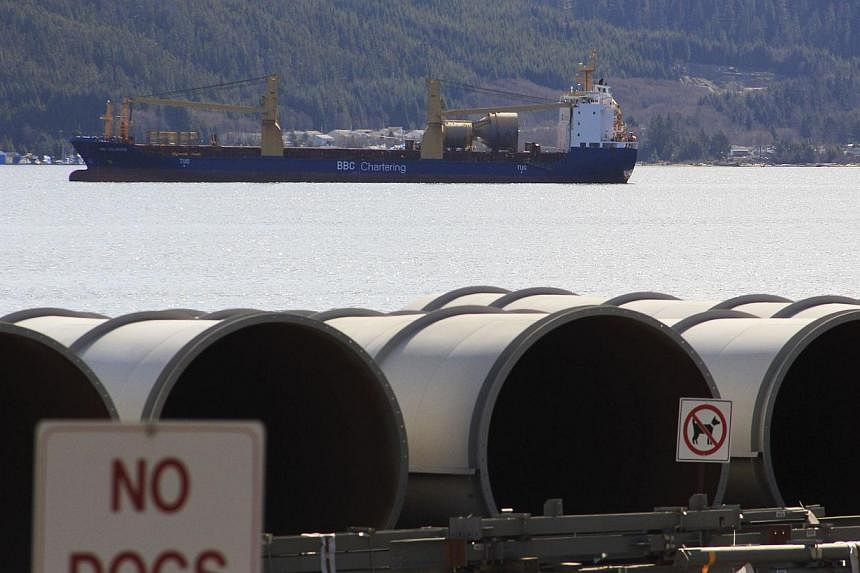OTTAWA (AFP) - Canada approved construction on Tuesday of a pipeline to the Pacific Ocean, opening up one of the world's largest oil fields as Washington dithers over another route.
The Northern Gateway project gained momentum after US President Barack Obama delayed a decision on another pipeline - Keystone XL - first proposed in 2008 to move Alberta bitumen to refineries along the US Gulf Coast.
The oil conduit from landlocked Alberta to the sea would propel further development of the province's oil sands, unleashing tremendous economic kickbacks for Canadians, said Natural Resources Minister Greg Rickford.
An independent review panel had recommended approving the project, with 209 conditions to mitigate environmental impacts, the minister explained, signalling the government agreed.
"Moving forward, the proponent (Enbridge) must demonstrate... how it will meet the 209 conditions," Rickford said.
The government's nod is the last major administrative hurdle for the C$7.9 billion (S$9.1 billion) Northern Gateway project.
However, opponents refused to lie down, vowing civil disobedience and court challenges.
Approval is politically risky for the ruling Conservatives, with 21 Tory MPs seeking re-election next year in westernmost British Columbia, where most voters oppose the pipeline.
Enbridge Inc.'s Northern Gateway project aims to move 525,000 barrels of crude per day from Edmonton, Alberta across 1,178km of rugged mountain landscapes to a new marine terminal in Kitimat on British Columbia's northern coast, for shipping to Asia.
The terminal would have two tanker berths, three condensate tanks and 16 oil storage tanks.
Up to 220 supertankers would use the terminal each year, one report estimated.
Environmentalists and aboriginals oppose the project, fearing a spill could damage the pristine coastline that includes salmon-bearing rivers and the habitat of a rare white bear.
The National Energy Board in December, however, found that construction and routine operation of the project "would cause no significant adverse environmental effects, with the exception of cumulative effects for certain populations of woodland caribou and grizzly bear."
The panel acknowledged that a major spill could be disastrous but determined that redundant safety systems proposed by Enbridge would significantly mitigate the risk of malfunctions or accidents.
Canada holds the third-largest oil reserves in the world.
Virtually all of its energy exports go to the United States, but after Washington initially baulked at TransCanada's proposed Keystone XL pipeline, focus shifted to China and other Pacific nations as new customers.

